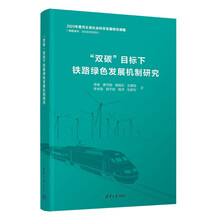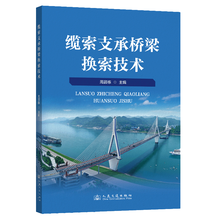










螺旋桨是海洋系统的主要推进设备,已经沿用了几百年。《Marine Propeller Theory and Application船用螺旋桨理论与应用(英文版)》反映了当前船用螺旋桨的*新进展,在阐述螺旋桨基本理论的同时,提供了基于CFD模拟的丰富数值结果,*新的实用测量技术和详细的设计算例。具体包括8个章节:船用推进器的发展、螺旋桨几何特征、推进器基本理论、敞水试验、船桨相互作用、螺旋桨空泡、螺旋桨强度和螺旋桨图谱设计。
Contents
Preface
1. Propulsion 1
1.1 General principle 1
1.1.1 Propulsors 1
1.1.2 Development of the screw propeller 5
1.1.3 Types of propellers 7
1.2 Extension of effective power concept 13
Questions 15
2. Geometry of a screw propeller 16
2.1 Propeller geometry 16
2.2 Helicoidal surface 18
2.3 Propeller features 19
2.3.1 Coordinate systems and propeller outlines 19
2.3.2 Blade sections 22
2.4 Pitch measurements 24
2.4.1 Simple measurement method 24
2.4.2 Complex measurement method 26
Questions 26
3. Propeller basic theory 27
3.1 Momentum theory 28
3.1.1 Ideal propulsor 28
3.1.2 Momentum theory for ideal propeller 34
3.2 Blade element theory 38
3.2.1 Velocity diagram 39
3.2.2 Lift and drag on aerofoil 40
3.3 Propeller hydrodynamic performance 44
3.4 Presentation of propeller data 47
Questions 49
4. Open water test 50
4.1 Dynamic similarity of open water test 50
4.2 Scale effects 56
4.3 Open water test setup 57
4.4 Other tests related to screw propeller design 63
4.4.1 Hull resistance tests 63
4.4.2 Propulsion tests 64
Questions 65
5. Interaction between hull and screw propeller 66
5.1 Wake effects 66
5.1.1 Reason of wake 68
5.1.2 Wake fraction 70
5.1.3 Wake measurement 71
5.2 Relative rotation efficiency 79
5.3 Thrust deduction 80
5.4 Hull efficiency 81
5.5 Propulsion coefficient 82
5.6 Thrust augmentation devices 83
5.6.1 Devices before the propeller 85
5.6.2 Devices at the propeller 90
5.6.3 Devices behind the propeller 94
Questions 97
6. Cavitation 98
6.1 Cavitation phenomena 98
6.2 Prediction of cavitation inception 100
6.3 Cavitation and its effects 107
6.4 Cavitation tunnel tests 110
6.4.1 Cavitation tests conditions 110
6.4.2 Cavitation tunnel 111
6.4.3 Cavitation tunnel measurement 112
6.5 Cavitation verification 115
Questions 118
7. Strength of propeller 119
7.1 Strength development 119
7.2 Rules for checking structural strength 120
7.2.1 Example of strength calculation 121
7.2.2 Pitch ratio modification 123
7.2.3 Propeller weight and moment of inertia 124
7.3 Cantilever beam method 126
7.4 Blade stress computational methods 129
7.5 Detailed strength design considerations 133
7.6 Propeller backing stresses 134
7.7 Blade root fillet design 135
7.8 Residual blade stresses 136
7.9 Admissible design stress 137
7.10 Full scale blade strain measurement 139
Question 139
8. Marine propeller designs based on charts 140
8.1 Design purpose 143
8.2 Design considerations 144
8.2.1 Choice of propeller type 145
8.2.2 Engine characteristics 146
8.2.3 Propeller details 147
8.3 Maximum efficiency design with series charts 149
8.3.1 B-δ charts derivation 151
8.3.2 B-δ application 152
8.4 Standard series charts 156
8.4.1 AU series charts 156
8.4.2 B-screw series 163
8.5 Design process 165
8.6 Propeller design example 167
References 182
Appendix 183
Appendix 1 AU standard series charts 183
Appendix 2 Nomenclature 186
Appendix 3 SI and USC conversions and constants 187
Color Figures